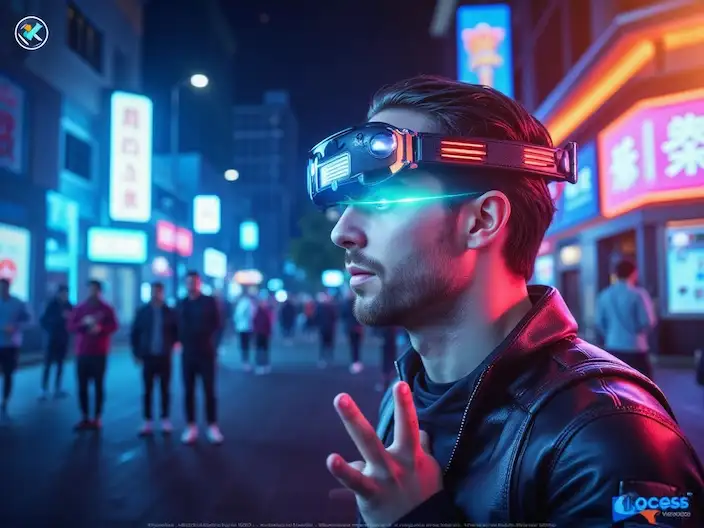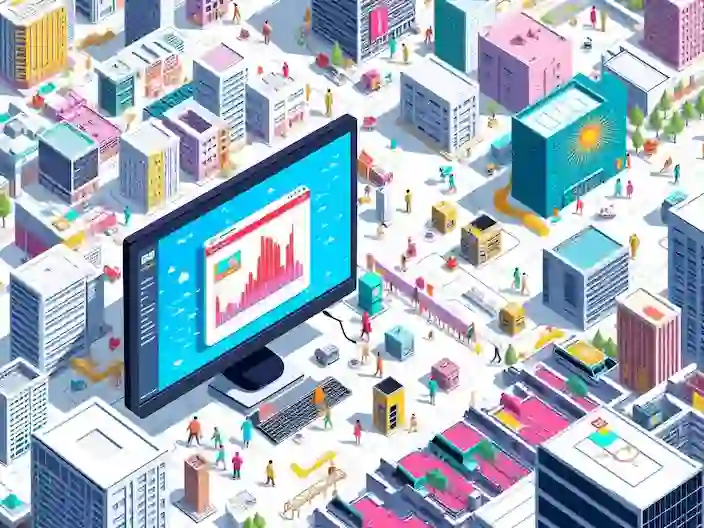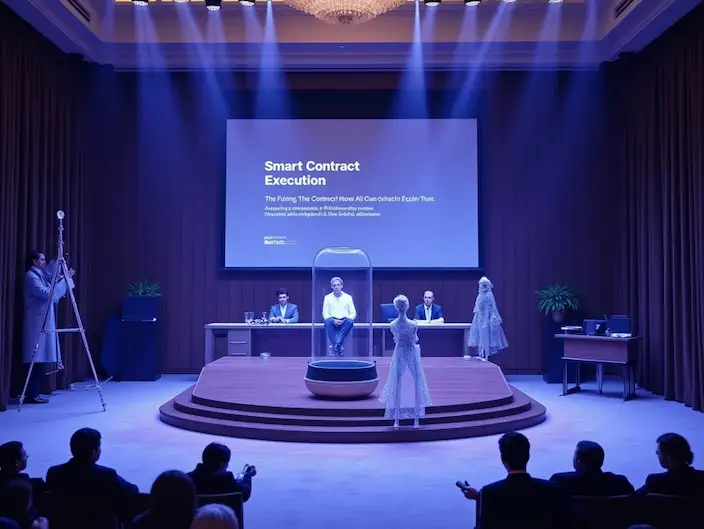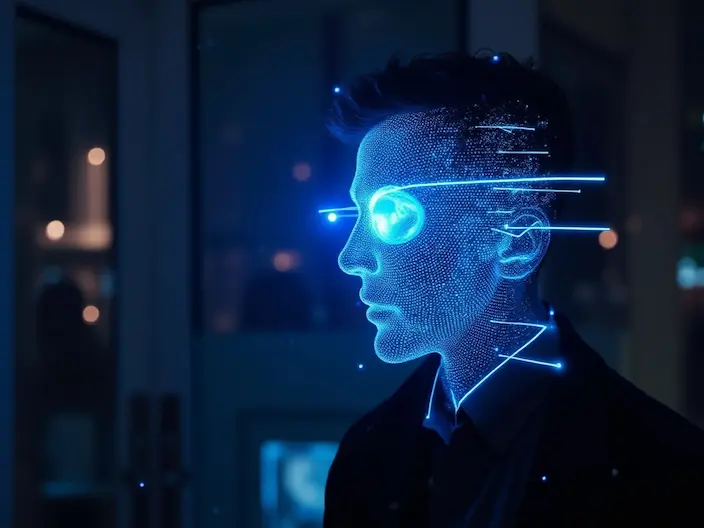- Introduction
-
- The importance of digital transformation and changes over time from Web 1.0 to Web 3.0.
-
- The necessity of adopting new technologies in the digital age.
- What is Web 3.0?
-
- A comprehensive definition of Web 3.0 and its key concepts.
-
- Core technologies: Blockchain, Artificial Intelligence, Smart Contracts.
-
- Main features: Decentralization, Security, Transparency, and Data Ownership.
- Differences Between Web 3.0 and Web 2.0
-
- Architectural structure and decentralization versus centralized structure.
-
- Data ownership and control: Transition from large corporations to users.
-
- Technological innovations: Advanced technologies and new economic models.
-
- Security and privacy: Enhanced resistance to attacks and data protection.
-
- User experience and social interactions: Personalization, direct and intermediary-free interactions.
-
- Economic models and valuation: Shift from an ad-based economy to tokenized economy.
- Applications of Web 3.0 in the Metaverse Era
-
- Creation of digital identities and ownership of virtual assets.
-
- Secure financial transactions and the new digital economy.
-
- Enhanced user experience in multidimensional and virtual reality environments.
-
- Ensuring transaction security and transparency.
-
- Innovative opportunities in gaming, education, art, and other industries.
- Challenges and Barriers Facing Web 3.0
-
- Technical and infrastructure issues: Scalability, performance, transaction costs, and network security.
-
- Legal and regulatory challenges: Legal uncertainties, cryptocurrency regulation, and data ownership protection.
-
- Economic issues: Changes in revenue models, project financing, and economic inequalities.
-
- Adoption and cultural challenges: Cultural resistance, technical complexity, and the need for education.
-
- Environmental challenges: High energy consumption and the need for green solutions in consensus algorithms.
- Conclusion
-
- Summary of the achievements and challenges of Web 3.0.
-
- The future outlook of Web 3.0 and its role in transforming the Metaverse.
-
- A call for innovation, collaboration, and adoption of new technologies to create a clearer and more secure future in the digital space.
Introduction
Today, the internet stands as one of humanity’s most important achievements, profoundly influencing communication methods, business practices, and even societal culture. From the days when web pages were simple and static, to the present when the internet has evolved into a dynamic and interactive ecosystem, we have witnessed tremendous changes. These transformations are not only reflected in the way content is produced and consumed but also in the structure and technical infrastructure of the internet. The first generation of the internet, Web 1.0, laid the groundwork for digital communications with static informational pages, while the advent of Web 2.0 revolutionized user interaction, social networking, and user-generated content.
However, as time passes, the need for a new platform that overcomes the limitations of past generations and offers more capabilities for the digital space has become evident. This is where Web 3.0 steps in—a new era of the internet leveraging advanced technologies like blockchain, AI, and smart contracts, creating a more decentralized and secure environment. Web 3.0 allows users greater control over their data and privacy, providing enhanced security and transparency in digital interactions via distributed networks.
In this new era, the internet is no longer just a simple communication medium; it has evolved into a vast ecosystem where digital economies, virtual identities, and even social interactions are redefined in a transformative manner. The shift towards Web 3.0 is, in essence, the redefinition of data ownership, the creation of secure environments for digital financial transactions, and the development of participatory platforms for content creation and exchange. These changes have not only reshaped the tech world but also have profound impacts on cultural, economic, and social aspects.
With the rise of Web 3.0, new challenges and opportunities have emerged, requiring a reconsideration of internet system designs, legal policymaking, and even societal attitudes toward the digital space. In this context, new concepts such as digital ownership, smart contracts, and intermediary-free interactions have the potential to transform the internet’s functioning and create a clearer, more transparent future for users. These advancements, alongside the emergence of the Metaverse, have created a new platform for multidimensional digital experiences that blur the line between the real and virtual worlds.
This article aims to provide a comprehensive look at the world of Web 3.0, highlighting not only the advantages and opportunities of this digital revolution but also examining its challenges. Our goal is to provide Metavers.News website users with a complete and up-to-date knowledge base so they can better understand the future of the internet and emerging technologies, and approach these changes with full awareness. We will delve deeper into the concepts, applications, and challenges of Web 3.0 to analyze this fundamental transformation from various perspectives.

What is Web 3.0?
Web 3.0 is considered the new generation of the internet, fundamentally transforming the way information is created, managed, and interacted with. Unlike Web 1.0, which presented static pages, and Web 2.0, which emphasized user interaction and content creation, Web 3.0 is based on a completely decentralized approach, leveraging advanced technologies such as blockchain, artificial intelligence, and smart contracts to provide a secure, transparent, and dynamic ecosystem for users. Below, we will explore the various aspects of Web 3.0 in detail:
-
Decentralized Internet
One of the key features of Web 3.0 is decentralization. In Web 2.0, data and information were primarily controlled by large companies and centralized servers, which led to issues such as privacy breaches, limited user control, and the possibility of data manipulation. In contrast, Web 3.0 uses distributed networks where data is stored and managed at multiple points, allowing users more control over their personal information and reducing the risks of cyberattacks or data exploitation.
-
Blockchain Technology
Blockchain is the backbone of Web 3.0. This technology ensures that transactions and information are recorded in an immutable and transparent manner. Blockchain guarantees that all interactions are logged in a digital ledger and protected from tampering or fraud. This feature is crucial for applications such as data ownership management, digital transaction security, and even the creation of new social networks. Through blockchain, users can easily prove ownership of content and data, preventing manipulation or discrepancies.
-
Smart Contracts
Smart contracts are software programs that automatically execute agreements between parties without the need for intermediaries. These contracts reside on the blockchain and cannot be altered once registered. Smart contracts ensure that all agreements are executed transparently and without the involvement of a central authority. This is particularly beneficial in financial sectors, digital real estate, and online services, where reducing intermediary costs and speeding up transactions is critical.
-
Artificial Intelligence and Machine Learning
By integrating AI and machine learning algorithms, Web 3.0 provides more personalized and precise user experiences. AI can analyze user data to identify their needs and preferences, offering tailored content or services. This not only improves the user experience but also automates and optimizes interactions between systems and users. From behavioral pattern recognition to providing smart suggestions, AI plays a central role in the transformation of Web 3.0.
-
Data Ownership and Control
One of the primary concerns for users in Web 2.0 was the ownership of data and privacy. Web 3.0 addresses this issue by leveraging decentralized technologies. In this model, users own their data and can securely and transparently manage it. This shift increases user trust in the internet environment and reduces concerns about misuse of personal data.
-
Digital Economy and Interactions
Web 3.0 not only changes the way information is accessed and managed but also plays a significant role in the creation of a new digital economy. With the introduction of digital currencies, tokens, and blockchain-based economic models, secure and intermediary-free payment platforms have emerged. These technologies have allowed online businesses to operate with greater speed, transparency, and security, while also creating new opportunities for startups in the digital space.
-
Wide Applications Across Various Sectors
Web 3.0 has revolutionized not only financial and social sectors but also areas like healthcare, education, arts, and even government affairs. Through decentralized platforms, secure voting systems, digital medical records management, and advanced educational services can be delivered in a secure and transparent manner.

Differences Between Web 3.0 and Web 2.0
The evolution of the internet from Web 1.0 to Web 2.0 and now toward Web 3.0 has resulted in fundamental changes that affect various aspects of technology, user interactions, and data structures. Below are the key differences between Web 3.0 and Web 2.0:
-
Architectural Structure and Decentralization
-
- Web 2.0:
-
-
-
- Centralization: In Web 2.0, most data and services are managed by large companies on centralized servers, meaning that data control is limited to a few entities.
- Dependence on intermediaries: Users need intermediary platforms like social networks, online stores, and other centralized services to access online services, which often act as middlemen between service providers and users.
-
-
-
- Web 3.0:
-
-
-
- Decentralization: Web 3.0 leverages blockchain and distributed networks, where data is stored across multiple points, allowing users more control over their information.
- Removal of intermediaries: Decentralized technologies and smart contracts eliminate traditional intermediaries, enabling direct interactions between users and service providers, increasing transparency and security.
-
-
-
Data Ownership and Control
-
- Web 2.0:
-
-
-
- Limited Ownership: In the Web 2.0 model, data is often controlled by large corporations. Users generally do not have legal or direct ownership of the data they generate and play more of a consumer role in data usage.
- Privacy: The lack of transparency in data management and the inability to decentralize leads to numerous concerns regarding users’ privacy. Using data without users’ consent and selling it to advertising companies are major issues in this generation.
-
-
-
- Web 3.0:
-
-
-
- Digital Ownership: Users in Web 3.0 own their data. Through blockchain technologies, the ability to prove ownership and directly control data is now available.
- Transparency and Security: Using decentralized systems, all transactions are recorded transparently, and any manipulation or misuse can be easily traced. These features increase users’ trust in online platforms.
-
-
-
Supporting Technologies and Technological Innovations
-
- Web 2.0:
-
-
-
- Traditional Technologies: This internet generation uses older technologies such as centralized servers, central databases, and standard APIs.
- User Interactions: Web 2.0 focuses on enhancing the user experience through social networks, blogs, and content management systems. However, these interactions face limitations in terms of innovation and personalization due to the centralized structure of data.
-
-
-
- Web 3.0:
-
-
-
- Blockchain and Smart Contracts: The use of blockchain as the core infrastructure ensures that all transactions and interactions are recorded in an immutable and transparent manner. Smart contracts guarantee the automatic execution of agreements without intermediaries.
- Artificial Intelligence and Machine Learning: Integrating AI into Web 3.0 enables more precise data analysis and offers personalized services. This technology helps systems identify user behavior patterns and provide optimal user experiences.
- Innovation in Economic Models: The emergence of cryptocurrencies and blockchain-based tokens has created new economic models that enable secure, transparent, and intermediary-free transactions.
-
-
-
Security and Privacy
-
- Web 2.0:
-
-
-
- Security Challenges: Centralizing data in one location makes it easier for cyber-attacks like DDoS, infiltration, and data manipulation to occur on this platform.
- Privacy: The lack of direct control by users over their personal data creates opportunities for misuse of information.
-
-
-
- Web 3.0:
-
-
-
- High Security: Decentralized architecture and the use of advanced cryptography significantly enhance data security. Each transaction or change in information must be verified by the network, reducing the possibility of fraud.
- Enhanced Privacy: Users have greater control over their data and can decide what information to share with others. This fosters trust in digital interactions.
-
-

-
User Experience and Social Interactions
-
- Web 2.0:
-
-
-
- Intermediated Interactions: Users primarily communicate through intermediary platforms, and their interactions are guided by algorithms set by central companies.
- Limited Personalization: Although efforts have been made to improve user experience, limitations arising from the centralized structure restrict deep personalization.
-
-
-
- Web 3.0:
-
-
-
- Intermediary-Free Interactions: Users can interact directly with one another without the need for traditional intermediaries. These interactions take place through decentralized networks and innovative platforms.
- Intelligent User Experience: The use of AI and advanced algorithms enables the delivery of experiences tailored to each individual’s needs and preferences. Dynamic and personalized interactions lead to increased user satisfaction and more effective engagement in the digital space.
-
-
-
Economic Models and Valuation
-
- Web 2.0:
-
-
-
- Advertisement-Based Economy: Most revenue models in Web 2.0 are based on advertising and selling users’ data. These models often come at the expense of users and reduce transparency.
- Digital Wealth Concentration: Income generated from digital activities primarily goes to large companies and intermediaries.
-
-
-
- Web 3.0:
-
-
- Token-Based Economy: The emergence of cryptocurrencies and non-fungible tokens (NFTs) has allowed the creation of new economic models. Users can have a stake in the value generated by participating directly in digital ecosystems.
- Transparency in Revenue Distribution: Blockchain technology ensures that revenue and benefits are distributed in a fair and transparent manner. This encourages users to engage more in digital projects.
-

-
Applications of Web 3.0 in the Metaverse Era
Web 3.0, as a transformative and innovative platform, plays a key role in the formation and development of the Metaverse. The Metaverse, defined as a multidimensional and interactive virtual world, requires infrastructures that can ensure the security, transparency, and true ownership of data and digital assets. Below are various aspects of Web 3.0 applications in the Metaverse era:
-
Digital Identity and Ownership of Virtual Assets
One of the critical topics in the Metaverse is the creation and management of digital identities. Web 3.0, using blockchain-based technologies, enables users to have unique digital identities. This digital identity:
-
- True Ownership of Digital Assets: Through the use of non-fungible tokens (NFTs) and blockchain standards, users can prove ownership of digital artworks, virtual items, in-game assets, and other digital content.
- Control and Management of Privacy: In Web 3.0, users have complete control over their data rather than having their personal information held by centralized platforms. This is especially significant in the Metaverse, where sensitive data exchanges such as identity details and financial transactions occur.
- Validation and Identity Verification: Decentralized technologies enable the creation of validation systems that verify users’ identities without the need for a central authority, thus preventing identity fraud.
-
Financial Transactions and New Digital Economy
The Metaverse, as a space for economic interactions and exchanges, requires secure, fast, and transparent financial systems. Web 3.0, by integrating cryptocurrencies, smart contracts, and tokens, has opened new economic opportunities:
-
- Smart Contracts: Smart contracts enable the automatic and direct execution of financial and commercial agreements in the Metaverse. These contracts ensure that all transactions are recorded and executed transparently.
- Token-based Economy: Using tokens and cryptocurrencies, users can easily participate in the virtual economy, buy and sell services, and benefit from incentive systems. This economic model encourages active participation in Metaverse activities.
- Borderless International Payments: Blockchain technology and cryptocurrencies enable global financial transactions without the need for traditional intermediaries, speeding up and reducing transaction costs.
-
Enhanced User Experience and Multidimensional Interactions
One of the main goals of the Metaverse is to create an interactive, multidimensional, and highly realistic space. Web 3.0, through advanced technologies, elevates the user experience:- Personalization and Artificial Intelligence: Machine learning algorithms and AI in Web 3.0 analyze user data to optimize the user experience based on personal preferences and needs. In the Metaverse, this contributes to the creation of dynamic virtual environments tailored to different tastes.
- Direct Interactions: Using decentralized platforms, users can directly and seamlessly interact with one another and the Metaverse environments. This type of interaction fosters a stronger sense of participation and solidarity, offering a more immersive and real experience of the virtual space.
- Integration of Virtual and Augmented Reality: Web 3.0 enhances the implementation of virtual reality (VR) and augmented reality (AR) technologies in the Metaverse, offering users immersive, interactive, and multidimensional environments where they can engage in digital activities in a real-world-like setting.
- Security and Transaction Transparency
Given the importance of security in the Metaverse, Web 3.0 guarantees the security of information and financial transactions through advanced encryption technologies and decentralized structures:- Immutable Ledger: Every transaction or activity in the Metaverse is permanently recorded on the blockchain. This feature prevents tampering and fraud, ensuring full transparency.
- Multiple Confirmations: In Web 3.0, transactions require confirmation from a network of independent nodes, which helps detect and block suspicious or invalid activities quickly.
- Data Protection: With the transfer of data control to users and the use of advanced encryption standards, privacy and security in the Metaverse have been significantly enhanced.
- Innovative Opportunities Across Various Sectors
Web 3.0 technologies not only create opportunities in financial and identity sectors but also introduce innovation in diverse fields:- Video Games and Entertainment: Web 3.0-enabled Metaverse can offer multidimensional, interactive gaming experiences where users can own digital assets like in-game items and trade them in virtual marketplaces.
- Education and Training: Using Web 3.0-based platforms, virtual classes, educational courses, and digital seminars can be held in secure and interactive environments. This educational model strengthens direct interaction between instructors and students.
- Art and Creativity: Digital artists can present their work as NFTs, protecting their ownership and intellectual property. This contributes to the creation of new art markets in the Metaverse, motivating artists to produce more valuable works.

Challenges and Obstacles Facing Web 3.0
Despite its potential and transformative outlook, Web 3.0 faces numerous challenges and obstacles that impact its deployment and widespread adoption. Below is a comprehensive look at these challenges from technical, legal, economic, and cultural perspectives:
-
Technical and Infrastructure Issues
-
- Scalability and Performance
-
-
-
- Scalability Challenge: Blockchain networks and decentralized systems still face limitations in transaction processing and handling large volumes of data. When user numbers and transactions increase suddenly, network speed and performance may degrade.
- High Transaction Costs: The costs associated with executing transactions in blockchain networks, especially during times of high network congestion, may hinder widespread Web 3.0 adoption.
-
-
-
Security and Resistance to Attacks
-
-
- Complex Cyber Attacks: Despite encryption technologies and transparent transaction records, cyber attacks such as node intrusions, 51% attacks, and other security threats remain a possibility.
- Smart Contract Code Issues: Due to the automated execution of smart contracts, flaws in the code or security vulnerabilities can easily be exploited. This requires continuous scrutiny and regular code updates.
-
-
Interoperability Between Different Networks
-
-
- Lack of Platform Compatibility: Web 3.0 involves multiple networks and blockchains, each with its own protocols and standards. This diversity can create issues with synchronization, data exchange, and interaction between different networks.
-
-
Legal and Regulatory Challenges
-
- Legal Uncertainty
-
-
-
- Unclear Legal Frameworks: New technologies like blockchain and smart contracts are still in the process of having legal frameworks established in many countries. The absence of clear, comprehensive laws creates ambiguities around data ownership, consumer rights, and legal responsibilities.
- Cryptocurrency Regulation: Cryptocurrencies and tokens are key components of Web 3.0, but many countries are still in the process of creating appropriate laws and regulations to oversee this domain. This may lead to uncertainty in transactions and economic activities based on these technologies.
-
-
-
- Ownership and Privacy Issues
-
-
-
- Data Ownership: In Web 3.0, the transfer of data ownership from centralized entities to users raises questions about digital ownership rights and data usage. Defining clear boundaries and laws for protecting individual rights is crucial.
- Privacy in Decentralized Environments: While decentralized technologies provide users more control over their personal data, ensuring data protection and complying with international privacy standards remains a significant challenge.
-
-
-
Economic Issues and Business Models
-
- Changes in Revenue Models
-
-
-
- Business Model Shift: In Web 2.0, business models primarily relied on advertisements and user data collection. Transitioning to Web 3.0 with token-based models and new digital economies requires significant changes in the revenue structures of companies and digital businesses.
- Blockchain Project Funding: Many Web 3.0 projects depend on funding through Initial Coin Offerings (ICOs) or similar models. The uncertainty in the success of these funding methods and the risks of investment may pose barriers to the ecosystem’s growth.
-
-
-
- Economic Inequality
-
-
-
- Digital Wealth Concentration: Although Web 3.0 aims to transfer data ownership to users, new inequalities may arise, where early adopters or those with more access to resources dominate the digital wealth.
- Economic Sustainability: Creating a sustainable digital economy that ensures balanced growth across all participants remains a challenge requiring detailed planning and supportive policies.
-
-
-
Adoption and Cultural Shifts
-
- Resistance to Change
-
-
-
- User Habits: Changing user habits and behaviors, which have been centered on Web 2.0 for years, cannot be quickly adapted to decentralized technologies and new economic models. This cultural resistance may delay the adoption of Web 3.0.
- Need for Education and Awareness: Users need detailed knowledge on how Web 3.0 technologies work, manage digital security, and use new tools. The lack of adequate education can become a significant barrier to the widespread acceptance of these technologies.
-
- Technical Complexity for End Users
-
- Complex User Interfaces: Many blockchain-based platforms and decentralized technologies still face challenges in user interface and experience. The complexity of using these platforms may discourage regular users and prevent widespread adoption.
- Need for Support Infrastructure: Users will need advanced equipment and software to fully utilize Web 3.0, which may lead to a digital divide for sections of society without adequate resources.
-
-

-
Environmental Challenges
-
- Energy Consumption
-
-
- High Energy Consumption in Blockchain Networks: Many consensus algorithms like Proof of Work require substantial energy consumption. Environmental concerns related to energy use may impose limitations on the adoption of blockchain-based technologies.
- Need for Green Solutions: Developing and implementing algorithms that consume less energy (such as Proof of Stake) is a critical priority, but transitioning to these models is complex and time-consuming.
-
Conclusion
Web 3.0 is not merely a technical update or a minor shift in how the internet functions, but rather represents a fundamental revolution in how we interact with data, services, and even one another. This new generation of the internet, through the integration of advanced technologies such as blockchain, artificial intelligence, smart contracts, and token-based economic models, envisions a future where security, transparency, and greater user control over personal and digital data are considered foundational values.
In this transformative journey, Web 3.0 goes beyond superficial changes, bringing concepts that can alter all aspects of digital life. From the creation of unique digital identities to ensuring real ownership of digital assets and facilitating secure, intermediary-free financial interactions, this emerging technology provides a platform where individuals can actively participate as true partners in the digital economy. In the metaverse era, Web 3.0 enables more multidimensional and realistic virtual experiences by establishing secure and transparent infrastructures, blurring the boundaries between the real and digital worlds.
However, like any great revolution, Web 3.0 faces numerous challenges, including technical issues, legal regulations, changes in economic models, and cultural acceptance. Though these challenges may seem large and complex, they can be gradually overcome through collaboration between industry, governments, tech communities, and users. Developing sustainable infrastructures, creating appropriate legal frameworks, and increasing public awareness of emerging technologies are essential steps for a successful transition to the Web 3.0 era.
In conclusion, Web 3.0 will not only transform the future of the internet, but also serve as a comprehensive and secure platform for numerous innovations across economic, social, cultural, and even artistic fields. This technology could enable users to participate more equally and transparently in the digital ecosystem with real ownership and full control over their data and digital assets. From the metaverse perspective, Web 3.0 acts as a gateway to a world where multidimensional digital experiences, intermediary-free interactions, and trust-based economies become a reality.
In other words, entering the Web 3.0 era leads us on a new journey of the internet; a journey where old limitations are replaced by endless opportunities, and new possibilities for growth, innovation, and collective participation emerge. These transformations herald a bright and dynamic future in the realm of emerging technologies, which could become a turning point in the history of digital communication, fundamentally altering the boundaries between users and platforms. Ultimately, Web 3.0 is a call for a fundamental change in how we view and use the internet, a change that can only be achieved through acceptance, innovation, and shared collaboration to create a safer, more transparent, and smarter future for us all.
Table of Contents
Toggle


One Response